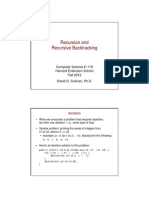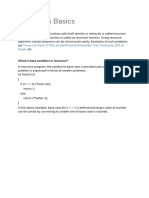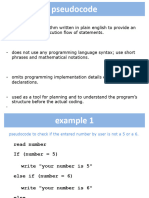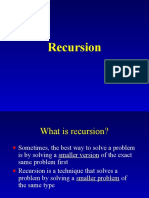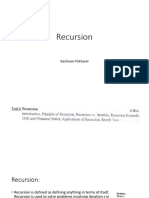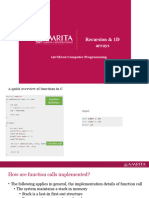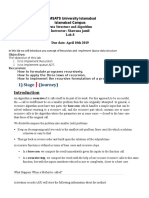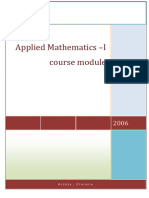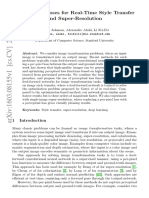0% found this document useful (0 votes)
27 views31 pagesDers3 - Recursion and Multi Dimensional Arrays
The document discusses recursion and multi-dimensional arrays. It provides examples of recursive functions including printing stars, calculating factorials, and computing the Fibonacci sequence. It defines multi-dimensional arrays as arrays with more than one dimension and explains that they are stored in memory in either row-major or column-major order. The memory address of an element in a multi-dimensional array can be calculated based on the array dimensions and element indices.
Uploaded by
mcsurmeli39Copyright
© © All Rights Reserved
We take content rights seriously. If you suspect this is your content, claim it here.
Available Formats
Download as PDF, TXT or read online on Scribd
0% found this document useful (0 votes)
27 views31 pagesDers3 - Recursion and Multi Dimensional Arrays
The document discusses recursion and multi-dimensional arrays. It provides examples of recursive functions including printing stars, calculating factorials, and computing the Fibonacci sequence. It defines multi-dimensional arrays as arrays with more than one dimension and explains that they are stored in memory in either row-major or column-major order. The memory address of an element in a multi-dimensional array can be calculated based on the array dimensions and element indices.
Uploaded by
mcsurmeli39Copyright
© © All Rights Reserved
We take content rights seriously. If you suspect this is your content, claim it here.
Available Formats
Download as PDF, TXT or read online on Scribd
/ 31




























